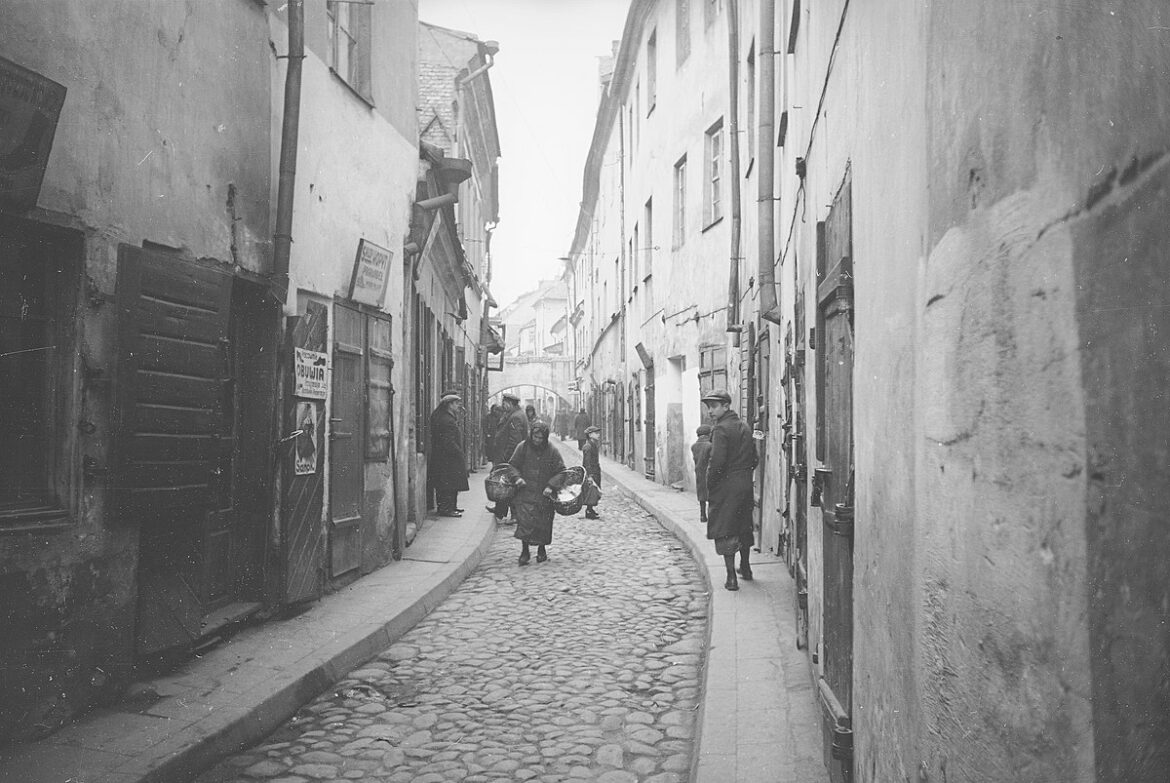The Jewish Scientific Institute established in Vilnius, one of the largest Polish cities of the Second Polish Republic, became the leading Jewish scientific institution in interwar Europe. It was a pioneering and interdisciplinary organisation that conducted modern Yiddish language research, published historical, ethnographic, and sociological works. It also documented tangible traces of Jewish culture.
In February 1925, Nachum Shtif, a philologist living in Kyiv, in his work on the Yiddish language, concluded that it was necessary to establish an institution where Jewish teachers and journalists could supplement their linguistic knowledge. It was to be a non-university, purely academic institution and to have four sections: Jewish philology, Jewish history, socio-economic affairs, and pedagogy. Shtif believed that Vilnius would be a suitable city for its headquarters, especially since it was called “the Lithuanian Jerusalem”.
The Vilnius City Council had an Israelite Club from 1919, through whose efforts in 1923 Council decided to grant continuous subsidies within the city budget for private Jewish education. Shtif proposed the creation of a whole system of institutions scattered in different countries, which would be subordinated to a single headquarters, for which Vilnius was chosen as the seat.
Funded and headed by the linguist and social activist Max Weinreich, the institute set itself the tasks to concentrate academic work in the Jewish language, above all research into the Jewish language and literature, to train academic staff and to record all manifestations of Jewish cultural life throughout the world. On 1 September 1927, the association was officially registered as the Society of Friends of the Jewish Institute of Science in Vilnius (YIVO). Its founders followed the path of establishing societies of friends of the institute in various countries to raise funds for its operation. The Institute was given its final organisational shape at a conference held on 24-27 October 1929 in Vilnius with the participation of representatives from Poland, Lithuania, Latvia, Estonia, Romania, Germany, and the USA. The Honorary Bureau was established and included world-famous people such as Albert Einstein and Siegmund Freud. Jewish communities and Polish city governments became interested in the operation of the institution and began to support the university financially. The Vilnius city council provided for an annual subsidy of 3,000 zloty in the city budget.
In 1926, the YIVO Bibliographic Headquarters was established to register all printed matter published in Jewish and Hebrew and in other languages concerning Jewish matters. In 1931, the institute also began to publish the monthly magazine “Jiwo Bleter” as the joint organ of all sections including philological, historical, economic, and statistical, psychological, and pedagogical parts. The establishment and work of the YIVO was noticed and appreciated in the Polish scientific community. In April 1931, Professor Mieczysław Limanowski praised the establishment of the institution on Vilnius radio: “The efforts of the Institute have drawn the attention of the entire Jewish world to it, and thus to Vilnius. Ten million Jewish-speaking people consider Vilnius to be their centre. We in Vilnius have a special interest in the development of the Institute, as we know the importance of institutions of universal significance for the city”. Societies of Friends of YIVO existed in many Polish cities, including Warsaw, Łódź, Lwów, Kraków, Białystok, and Lublin. The Polish authorities were generally very supportive of the initiative to establish an institute in Vilnius. On the other hand, they feared an influx of communist literature from Soviet Russia.
By 1939, the output of the YIVO had grown significantly. The Museum of Art was organised, which possessed many valuable paintings. Established in 1931, the Theatre Museum had tens of thousands of photographs, posters, models, etc. The Bibliographic Centre had over 200,000 registered units, the library had over 40,000 units (including many unique items and rarities), the archive had several thousand manuscripts and about 100,000 posters, leaflets, statutes, and reports of social organisations. The materials of the Folklore Commission accounted for more than 100,000 folklore units (inventories of proverbs, folk beliefs, children’s works, songs, anecdotes, tales, festive customs, and ethnographic objects). The Youth Research Department collected more than 600 autobiographies of young people aged between 17 and 22 from more than 150 towns. YIVO in 1937 was supported by Societies of Friends in 20 countries worldwide: South Africa, England, Austria, Belgium, Brazil, Chile, China, Estonia, France, Canada, Cuba, Lithuania, Latvia, Mexico, Palestine, Poland, Romania, the United States, Switzerland, and Uruguay. Smaller groups supporting the institute existed in several other countries (apart from the Soviet Union, where several Jewish academic institutions were founded in the Soviet spirit). Twelve volumes in the monograph series and 57 issues of the newsletter were published. Fund was also set up to finance the publication of a universal encyclopaedia in Jewish (the first two volumes were published in late 1934/35).
The Institute’s activities in Vilnius were halted in 1940. During the German occupation, its staff were imprisoned in the ghetto and a large part of the collection was destroyed or looted. Some of the most valuable objects managed to be saved, they were taken to Germany and then handed over after the war to the Institute still operating in New York.





